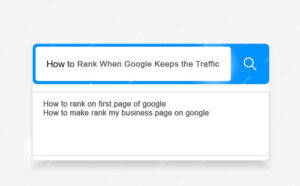In our previous blog, you learned the Google Analytics terminology from A-D. Let us continue learning
about more GA terminologies from E-Z.
Ecommerce conversion
It is estimated when someone purchases from the website during a session. You will find metrics and
dimensions about your website’s eCommerce activity in Google Analytics.
Engagement Rate
Google Analytics calculates an engagement session when the session includes two or more page views,
lasts for more than 10 seconds, and includes at least one conversation. The engagement rate is
calculated as the number of engaged sessions divided by the total number of sessions.
Events
These are the specific interactions on your website that are tracked in the event section of GA4. You can
customize the event and set it as a goal. The feature will help you track the goal. For example, if you
want to track the actions that a user took to complete the event, you can use the feature.
Filter
Filters can be applied to refine the data you want from your GA report. You can exclude and include the
data as per your requirements.
First interaction
The first interaction or first click is an attribution report model that gives credit for the conversion that is
used by the user to find your website. It is the credit given to the first touchpoint on the website.
Geo
The geo report provides information about your website visitors based on their language and geographic
location.
Goal
You can customize your goals according to the actions you want users to complete on your website. For
example, you can set a goal to track the people signing in to your website.
Goal Abandonment
It is a report that tracks users who started a conversion process but did not complete the desired action.
Goal completion
It is the report that tracks the completion of the goal you have set in the GA for the given session.
In-page analytics
This feature of GA helps you track the user’s interaction with a particular page.
Interests
Enabling this feature in GA will help you identify the interests of the users on your website. It breaks the
report down by category and in-market segment.
Last-click conversion
It is an attribution model that measures the user’s last clicked touchpoint before purchasing and
attributes all credit to that conversion.
Medium
It is the report that provides information about your website traffic sources from a particular channel
like PPC or social media, etc. That means this feature helps you identify the exact medium from which
your website traffic is coming. It may be from ads, social media pages, or any other medium.
Mobile
This feature of GA helps in identifying the type of mobile device the user is using while visiting your
website.
Multi-channel funnels
This function provides the data related to your sales funnel. It provides a complete picture of how your
marketing channels are working together to generate sales and conversions.
Organic
It is unpaid traffic coming to the website while searching for a relevant term on the search engines.
Pageview
The Analytics tracking code tracks information about the view of the page on your website. As soon as
the user views a page on your website, the tracking code tracks the information and saves it for the
record.
Real-time
It is a real-time activity that is monitored by Google Analytics and includes various metrics and data
points.
Real-time conversions
This feature is used to track real-time goal competitions and conversions.
Real-time events
This feature allows you to view information about real-time events and interactions on your website.
Real-time locations
This feature provides information about the current location of the users that are active on the website.
Real-time overview
It is a dashboard that includes all the real-time metrics and stats including active user locations, current
pageviews, etc.
Real-time traffic sources
It provides real-time information about where the traffic is coming from on your website. It breaks down
the pageviews in real-time per minute and per second. It also provides information about the devices
that active users are using to browse your website.
Referral
It is the unpaid website traffic that arrives on your website from some other source which may include a
link or another domain, etc.
Session
It is the number of times a user visited your website in a specific time period.
Site content
It provides complete information related to all the pages on your website, along with user statistics. It
provides information about the page from which the user entered the website and exited.
Site search
It is a very useful feature that helps you identify the search terms users are searching for on your
website.
Site speed
It is the total loading time of your website’s page. This feature also shows the factors slowing down your
website’s speed and provides suggestions for rectifying it.
Social
This feature tracks the data related to the traffic the website is receiving from various social media
platforms.
Source
It is the source from which the user found your website. For example, if the source is “Google” then the
user must have searched for a term relevant to your website and found it on Google.
Technology
It provides website traffic information related to the technology used by the user. It includes the
platform, operating system, and screen resolution.
Unique pageviews
It counts the page viewing as one in a single session, even if it is browsed multiple times by the visitor.
Users
It is the visitor who has visited your website.
Users flow
It is the graphical representation of the path followed by the user while browsing your website. It
contains all of the user’s information from entering the website, browsing pages, and exiting the
website.
Views
It is the number of times the user has visited the page. For example, if the user visited the “contact us”
page, then navigated to the “about us” page, and again came back to the “contact us” page, then two
views will be calculated: one for the “contact us” page and one for “about us.”
For more information on Google Analytics and other SEO techniques, please contact us.










